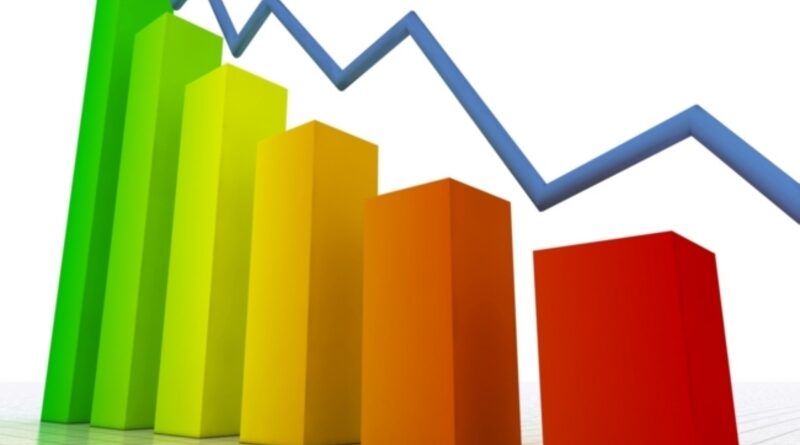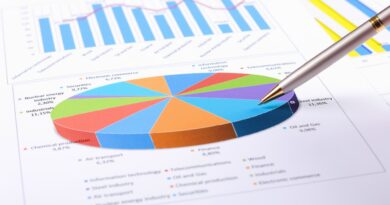Definition of Aggregate Demand
In microeconomics, we study demand for goods and services of individuals and firms in an economy. The study of goods and services consumed by individual households and firms will not be much helpful if it is restricted to this basic level. There is therefore a need to get a picture of the total demand for goods and services by individuals and firms for an entire economy. This leads us to the aggregate demand of goods and services for an economy. In as much as identifying total aggregate demand in the economy may be a daunting task, the use of aggregate demand (AD) curve is essential in simplifying this exercise. In this article, aggregate demand is precisely defined and explained in economic context. We also discuss the determinants of components of the aggregate demand in an economy.
Definition of Aggregate Demand
Aggregate demand is the total quantity of goods and services that are demanded by consumers in an economy at any given price level (Baumol & Binder 1994). According to Mundell-Fleming’s equation, the aggregate demand for goods and services in an open economic system is given as:
Y=C + I + G + (X-M)
Where:
Y represents the total income or output of the economy. C is the consumers’ expenditure, which includes goods- both durable and non-durable, and services. I represent the gross domestic fixed capital formation, which includes investment expenditure by firms on capital goods and working capital such as inventory of finished goods and work in progress. G represents the general government expenditure, which may accrue due to spending on public goods and services, and government transfer payments. However, transfer payments in form of social security benefits such as pensions and job-seekers allowance are normally not included in aggregate demand since they are not payments to factors of production for increased output. X is an economy’s export of goods and services to foreign economies. Exports sold to foreign markets are inflows of demand into the circular flow of income in an economy and therefore adds to demand for the goods and services produced. When the exports of a country are high, the firms producing goods for export will increase the production, which adds to national output and incomes of producers. M is the imports of goods and services of an economy. Imports are leakages (withdrawals) from the circular income and expenditure flows in an economy. Despite the fact that goods and services come into the economy, there is an outflow of money from the economy. Spending on imports is therefore subtracted from the aggregate demand.
By defining the aggregate demand of an economy in terms of prices and output levels, it therefore becomes possible tom analyze effects of other variables such as the interest rates on aggregate demand.
Determinants of the Components of the Aggregate Demand
By using the Aggregate Demand (AD) function, we are able to retrieve different components of aggregate demand. Factors that influence the AD of an economy include, as mentioned above, consumption, investments, government expenditure and net exports. Therefore, we are going to look at individual components and their respective determinants.
Firstly, consumption is the most important component of aggregate demand. This is the total amount of money that is spent by households and firms on durable goods such as electronics and cars, non-durable goods like food and cosmetics, and services such as insurance. The main determinant of consumption expenditure is the level of disposable income. An individual’s increase in disposable income leads to increased spending on consumables (Baumol & Binder 1994). In other words, there will be an increase in marginal propensity to consume (MPC) if more disposable income is availed to a consumer. An increase in personal disposable income shifts the AD curve to the right.
An increase in interest rates will discourage borrowings used to finance some of consumptions such as purchase of automobiles. High interests will also increase returns on savings and hence, there will be a diversion of funds from consumption to savings. As such, increase in interest rates decreases consumption while increasing savings.
Wealth possessed by households will also have an effect on consumption. An increase in financial wealth of an individual, such as bonds and stocks, will motivate them to increase their levels of consumption and decrease savings. On the other hand, an increase in physical wealth such as cars and buildings will reduce the need to acquire these goods and therefore decrease consumption on such. The income available for consumption is to a large extent affected by taxation (Mankiw 1997). The government collects taxes from household income. An increase in taxes will reduce the disposable income available for consumption and thereby reducing consumption expenditure.
Secondly, the level of investment activities in an economy will affect the aggregate demand. Firm encounter a wide range of factors that affect their investment spending. Just like in consumption, interest rates play a major role in investment spending activities of firms and households. High levels of interest rates increase the cost of borrowing, which is used to fund investment expenditures such as factory expansion. Given an increase in the cost of borrowing, firms are less likely to undertake expenditures on capital goods. This will lead to a decline in investment expenditures. Lower interest rates have a reverse effect to investments.
Expectations of businesses will also affect the level of investment expenditures by firms. If firms are optimistic that the economy will be favorable in the near future, they are likely to increase their investment expenditures in the present so as to earn higher returns (Mankiw 1998). Pessimism among firms about the future economy, influenced by political instability or global economic recessions, will reduce investment spending in the present. Advancement in technology is embodied in goods and capital used in production. Better and more efficient technology will trigger spending by firms in order to purchase new capital assets for production, and thereby increasing investment expenditure.
Thirdly, net exports often change from time to time. Currency exchange rates play a big role in determining the value of net exports. An exchange rate is the price of a nation’s currency against a foreign currency. As exchange rate changes, the value of imports and exports will fluctuate, and thereby reducing the overall net exports.
Trade policies also have a big effect on the value of net exports. Trade barriers, restrictions, tariffs and subsidies that nations impose on one another in order to gain competitive advantage will be advantageous to one country and disadvantageous to the affected country. Higher restrictions on imports have a tendency of increasing net exports of a country.
Lastly, the expenditures made by governments will be influenced by two main factors. The first factor is fiscal policy implemented by the government. A substantial decrease in aggregate demand due to decrease in household spending will be mitigated by increased spending by the government. This action increases government purchases, lifting the purchases line (Mankiw 1998). The second factor is politics. Political leaders may plan to reduce the budget deficit or limit government spending on social programs. Such measures could lead to decrease in government purchases, which would result in downward shift in government purchases line.
Conclusion
In this paper, we have been able to give a definition of aggregate demand of an open economy. Components of aggregate demand function have been clearly stated and explained. In the second part of the essay, we have discussed factors that determine the value and effects of components of the aggregate demand in an economy. A change in any of the components of the aggregate demand will lead to a shift in the AD curve.
Bibliography
Baumol, WJ & Binder, AS 1994, Economics, Harcourt Brace & Company, New York.
Mankiw, N G 1998, Principles of Economics, Harcourt Brace College Publishers, New York.
Mankiw, NG 1997, Macroeconomics, Worth Publishers, New York.




